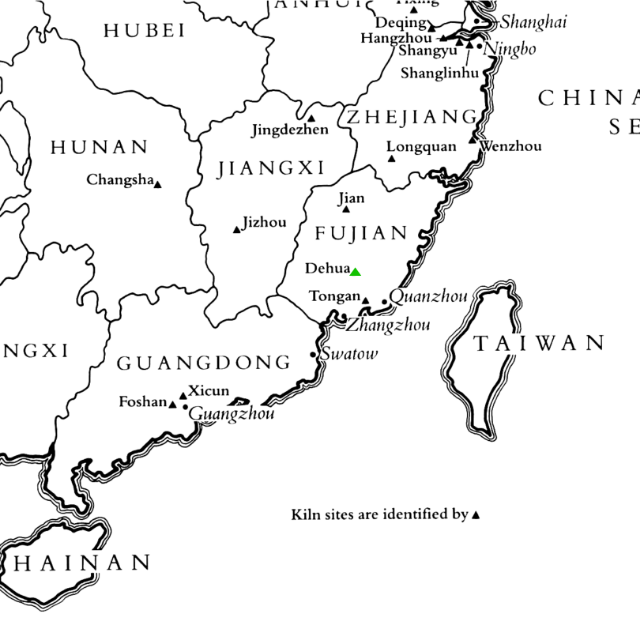White Guanyin
Even this small crack cannot take away this statuette’s pure and white beauty. In Chinese popular culture, Guanyin has been represented in various art pieces, including white porcelain. Large quantities of this Blanc de Chine ware were produced in Dehua in Fujian province during the late Ming dynasty (1368-1644). Blanc de chine is not made of ivory but porcelain clay mined from the nearby mountains in Dehua.
Dehua, a centre of the porcelain industry from the 16th century onwards, is near the port of Yuegang where rhinoceros horn and ivory tusk were traded and embellished.Cf, p 45 Dehua potters could have adopted the carving and decorating techniques from the craft industry in Yuegang which facilitate the growth of the porcelain figure industry. Guanyin statues from the Dehua kilns were made as export porcelain for European markets. Queen Mary II of England (1516-1568) purchased Fujian pieces as part of her private collection.Cf, p 42
In our example, a white-robed Guanyin was shaped out of Dehua porcelain and covered with a layer of smooth ivory-colored white glaze. The color white represents pureness, virtue and enlightenment.
